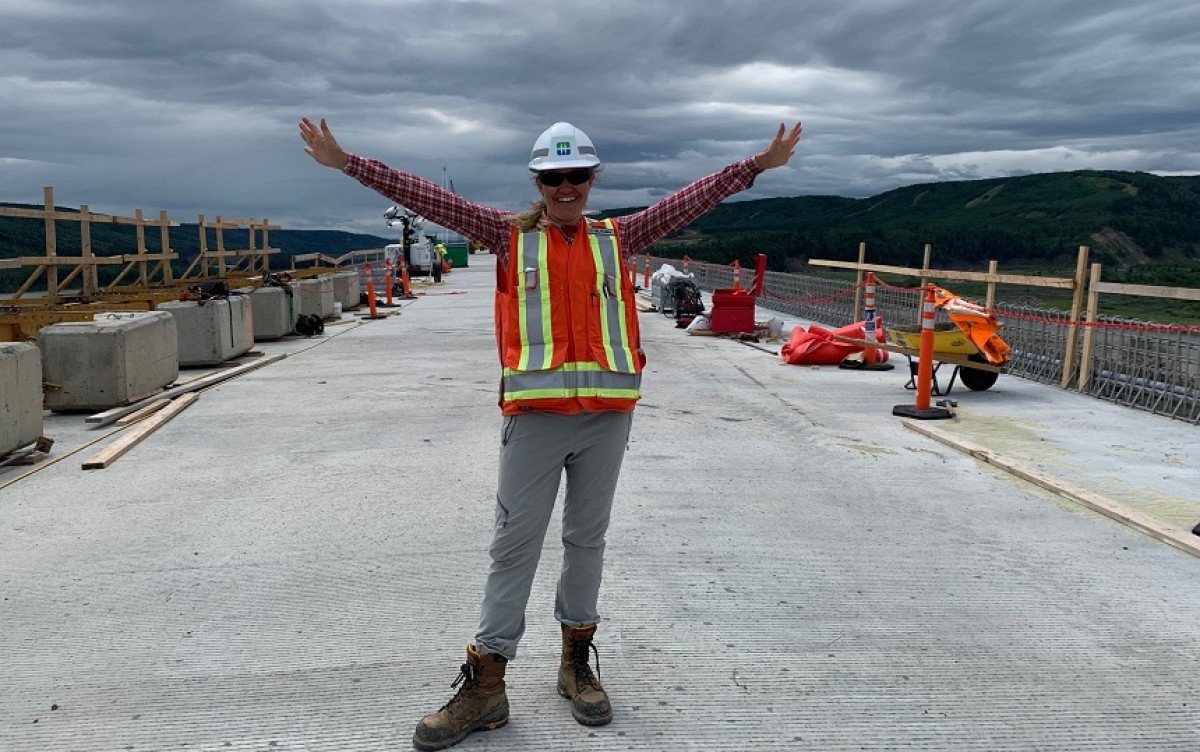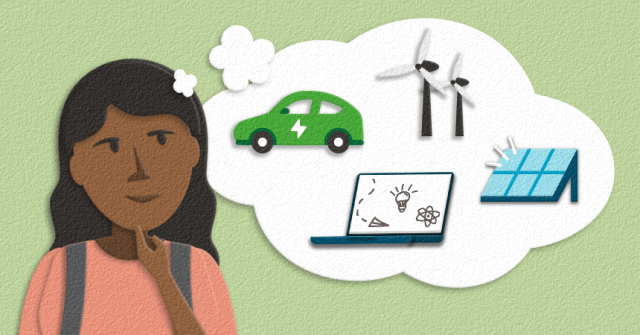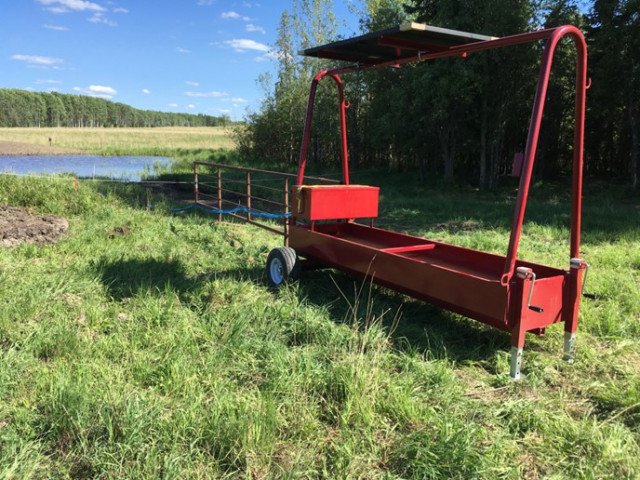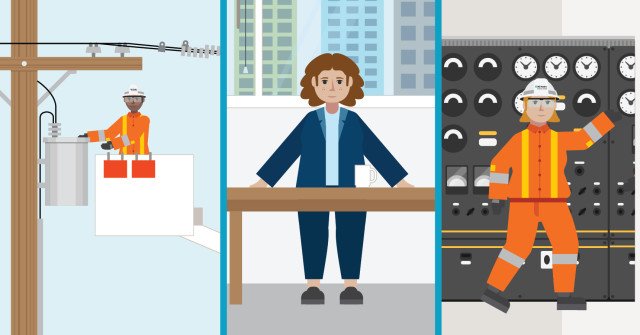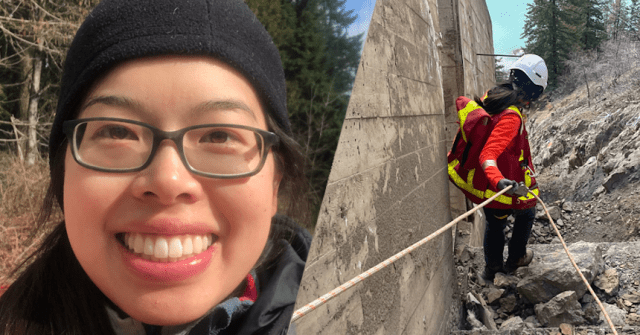Molly Brewis has battled stereotypes en route to a career at BC Hydro
In the lead-up to the International Day of Women and Girls in Science (February 11, 2024), we talked to BC Hydro’s Molly Brewis, who battled stereotypes en route to a rewarding and varied career in science.
The pedigree was there. Her granddad worked for BC Hydro, and so did her dad. But Molly Brewis didn’t grow up thinking she’d actually work for B.C.’s electrical utility.
Strong and outdoorsy with a can-do attitude, Brewis grew up in towns full of people employed by BC Hydro. Places like Hudson’s Hope and Bridge River that many British Columbians would struggle to find on a map.
“I was driven by what I was fairly good at, and for me that was sciences,” says Brewis, who now leads our electric vehicle infrastructure and planning team. “But growing up in small-town B.C. I didn't have a lot of female scientist role models to look up to. Thankfully I had some good male teachers who encouraged me to continue on that path.”
That path has taken her to a job helping us deliver on the BC Government’s CleanBC climate action goals by adding 3,000 electric vehicle fast-charging stations across B.C. by 2030. Her team works on everything from securing site hosts, to constructing, and maintaining charging stations.
The fact that she does this from our head office on Dunsmuir Street in Vancouver has led to a little good-natured ribbing from her dad, who worked as a technologist at remote power stations across B.C. “He asks what it’s like to work in the “ivory tower”,” she says with a laugh.
But Brewis has done her time in remote locations in Canada. Plenty of it, in fact.
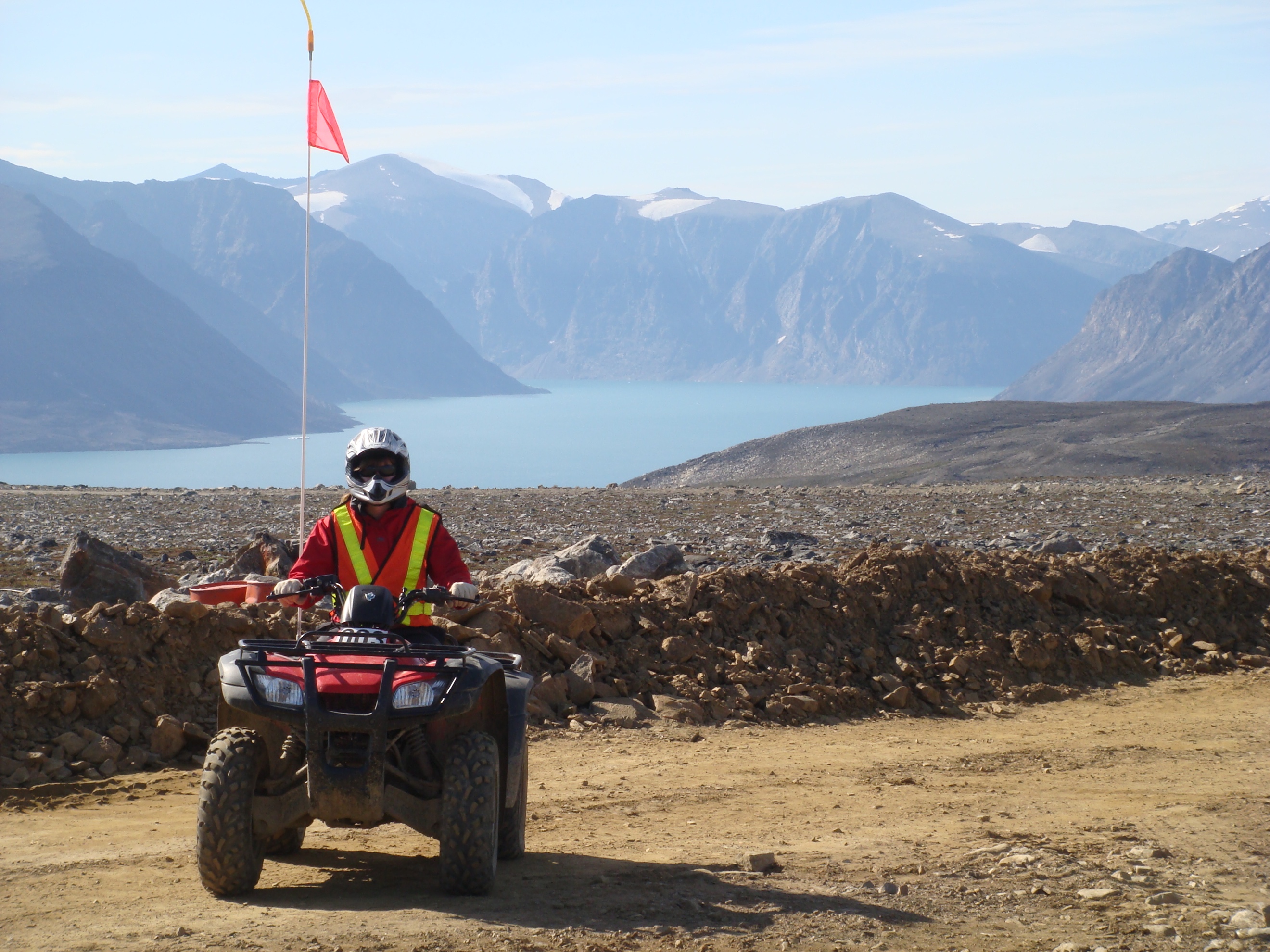
Molly Brewis pilots an ATV during her straight-out-of-school stint as an environmental chemist on a Department of National Defence crew cleaning up a military site on Baffin Island.
Life as a woman working among men in Canada’s north
Brewis talks a lot about how men, from teachers to fellow workers, have stood up to help her defeat the preconceptions of what she could and couldn’t do. And in her work with our Women’s Network, she often emphasizes the value of finding allies to help you through the rough patches.
It doesn’t get much rougher than a spot as the lone woman – a newbie environmental chemist with a freshly-minted honours degree from Queen’s University – at a Department of National Defence military site cleanup on Baffin Island. She embraced the opportunity experience Canada’s north, but had to figure out how to fit in.
“They just didn't feel like a woman should be on a construction site in the far north, in a remote, harsh environment,” she recalls. “We were doing physical work like loading equipment in and out of helicopters. And one guy called me out for using a pickaxe to gather soil samples. To me it was, ‘why shouldn’t I be able to use a pickaxe like everyone else?”
There were other jobs in similar situations in the north, including a stint ensuring environmental regulations were being followed on an oil-drilling barge off the coast of Prince Rupert.
One day she had to stop the crew – “a bunch of guys from the UK who wanted nothing to do with me” – from drilling for a half hour while she measured a screen on a water intake. “But there was one individual on their crew who said to me, ‘I'll help you do that’… and from then on, I was like, ‘That's my guy’. If I'm having a hurdle with anyone else here, I know that he's going to be on my side.
That sort of advocacy has helped her in her career, along with a piece of advice she has adopted as her mantra.
“Strive for progress, not perfection,” she says. “There’s rarely enough time, enough data, or enough people for any given task. So we’re challenged to make the best decisions with the resources available, despite some uncertainty. I’m continually learning to be comfortable with this.”
One in three employees at BC Hydro are women
BC Hydro was recently recognized as one of Canada’s Top 100 best places to work and also cracked the top 100 for diversity. Just under one in three (32.6%) of our team members are women, and as a member of our Women’s Network, Brewis is intent on building on those numbers and improving, among other things, pay equity.
“It’s great to see such strong female representation on our board of directors and in our senior management, and I feel more at home here because of those things,” says Brewis, noting that our executive leadership team is comprised of five women and four men. “I think things have changed overall in society. I think just the fact that the government has mandated a Pay Transparency Act is a sign of that change. That was not something that anyone was even talking about back when I first came out of university.”
Brewis has worked in an assortment of rewarding jobs at BC Hydro – from strategic business advisor to senior environmental coordinator on the Site C Clean Energy Project. And while she’s no longer wielding a pickaxe to collect soil samples, her new position as head of the electric vehicle infrastructure team aligns nicely with her environmental leanings.
“I think that I'm contributing towards a bigger societal goal, a bit of an altruistic thing,” she says. “Helping B.C. lower our carbon emissions is exciting. People are talking about EVs a lot in the news – there's an article every day when I open up my CBC app – and it’s nice to be able to work on something that people can relate to when you meet them at a party, or go skiing.”
Teachers and students now have greater access to STEM learning
At BC Hydro, we’re supporting STEM awareness through programs and partnerships with community-based organizations like Let’s Talk Science, the Science Fair Foundation of B.C. and Science World. Did you know that Science World has a program called Scientists and Innovators in Schools? You can request an interactive presentation for your class by STEAM professionals. Science World also supports young girls and women explore careers in STEAM at their annual Girls and STEAM Summit.
Although there are more choices than ever for young women to get involved in STEM, there’s still a lot of work to do.
A 2022 Let’s Talk Science Spotlight on Learning overview found that more than half of Canadian students still graduate high school without the senior level math and/or science credits needed for entry to university STEM studies. And for certain areas of study, few are taking grade 12 courses. While grade 12 math has the highest national completion rate at 47%, chemistry (25%), biology (22%), physics (15%) and computer science (3%) are lagging.
STEM education doesn’t just apply directly to areas of university science study. Physics 12, for example, is a prerequisite – along with Math 12 and English 12 – for entry into many skills trades programs, including BC Hydro’s apprentice electrician program.
The number of women graduating in science and technology from post-secondary institutions has been climbing. But women continue to earn less than men in the labour market and represent only 23% of STEM jobs in Canada. A 2021 Canadian study on STEM enrolment and graduation found that among high school graduates, women are 29.8% less likely than men to enroll in a postsecondary STEM program shortly after graduation.
In-class activities related to STEM learning
Inspired by Molly Brewis’ educational and career path to her current job managing BC Hydro’s electric vehicle infrastructure and planning team, here’s a variety of Power Smart for Schools activities aimed at engaging students in the world of STEM.
Science of climate change (Grade 7)
Students get the facts about climate change through videos, experiments, and hands-on learning.
Seven generations thinking (Grade 5)
Slides examining direct and indirect impacts of our actions help students develop an understanding of how our choices can affect people seven generations from now.
How can we identify a valid scientific conclusion? (Grade 10)
Students use criteria and a thinking strategy to identify a valid scientific conclusion for which method of producing hydrogen fuel cells is the most sustainable: steam, methane cracking, or water electrolysis.
Sustainable solutions (Grade 10)
Students will research a tech company to ascertain whether the company has a true commitment to sustainability or is greenwashing.
EV truths and myths (Grade 10-12)
An EV truths and myths slideshow helps students gain a better understanding of EVs, how they are used, and how they can contribute to a low-carbon future.
Shifting our transportation mindset (Grades 6-8)
Students learn about various transportation options such as electric vehicles, and their impact on the world.
How can the environmental impact of energy transformations be reduced? (Grade 10)
Students analyze the environmental impacts of energy transformations involved in electricity generation, then develop three practical tips for reducing this impact.
Related stories
